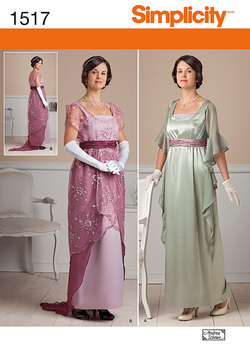
In previous blogs I've talked about my research and showed some of my pattern reference and draping. In this post I'm going to explain the basic construction.
RESEARCH BREAK ......
Well, I looked on line and couldn't figure out quite how to phrase the question to find out when linings started to be put in women's gowns. I looked in my "Costume in Detail" by Nancy Bradford, but her book only goes up to 1930, so I don't know. I think perhaps it happened recently, meaning during my lifetime. I hope someone reading this can chime in.
But, back to these dresses. Here's a photo of the inside of one of the foundation bodices.
The waist ribbon, also called a waist stay is to be worn tight to take any pressure off the closing in the back and help to hold the dress in place. Gowns like this should fit pretty tightly. And actually, having the seams exposed on this bodice makes is easy to do some last minute fitting.
The upper and lower edges of the bodice are finished with bias tape. The pattern calls for purchased bias, but bias made with the same fabric as the bodice would be much nicer. If you do that, cut the bias 1" wide and sew it with a 1/4" seam. Then an 1/8" ribbon should go through the upper bias. This is tied tightly in the back which solves any gaping or fit problems above the bust.
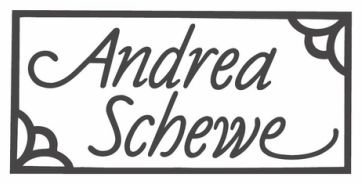
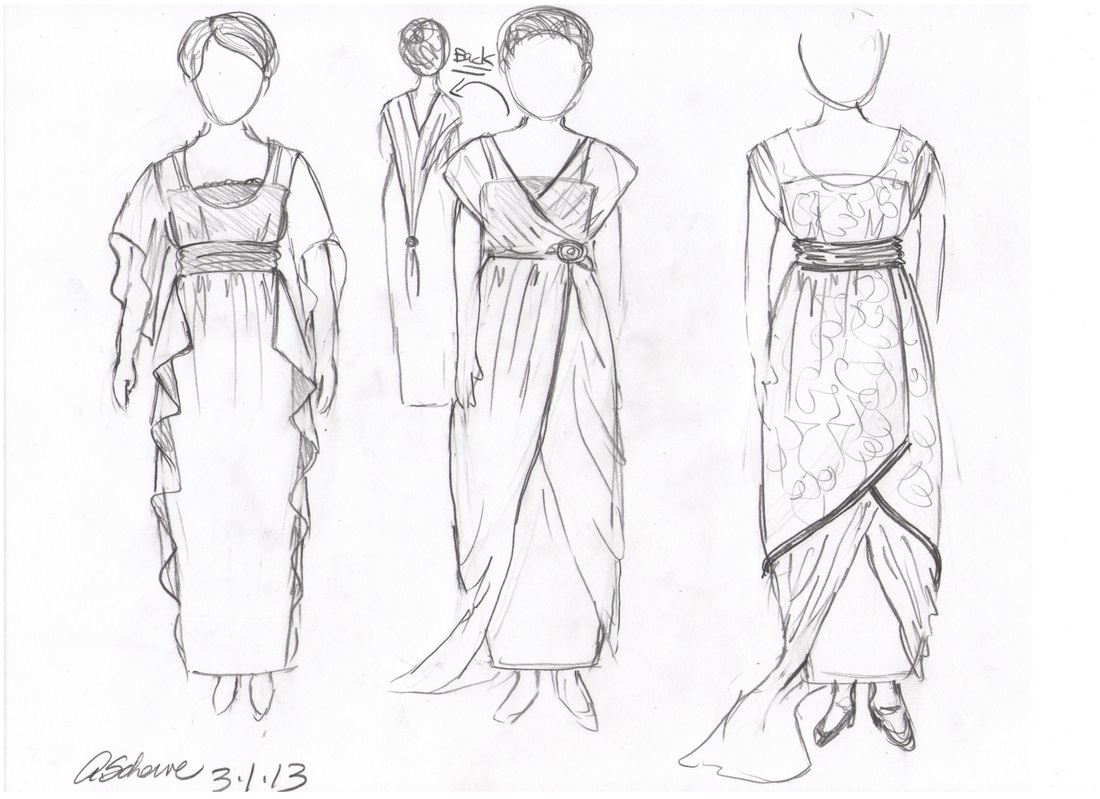
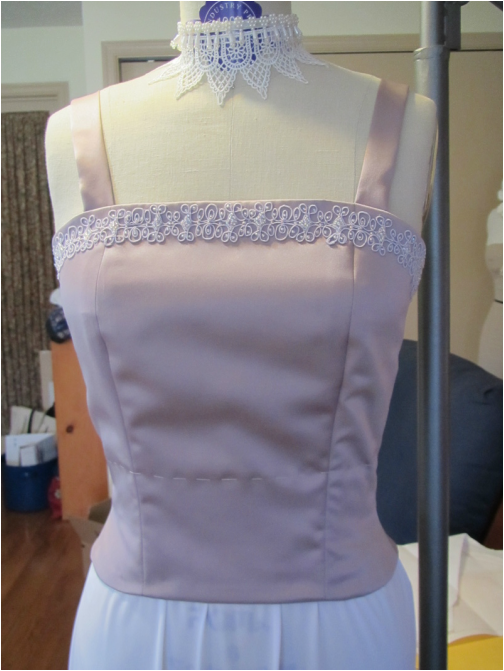
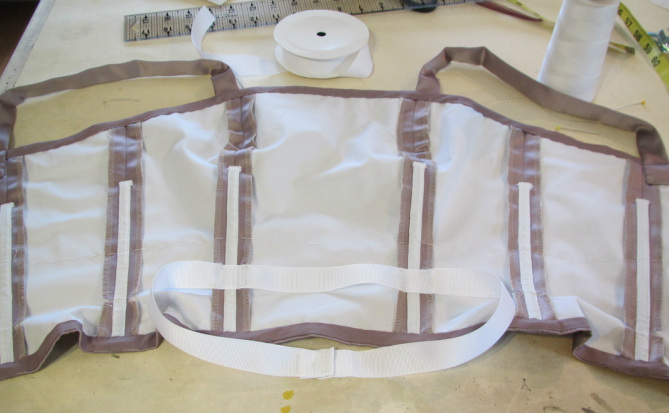
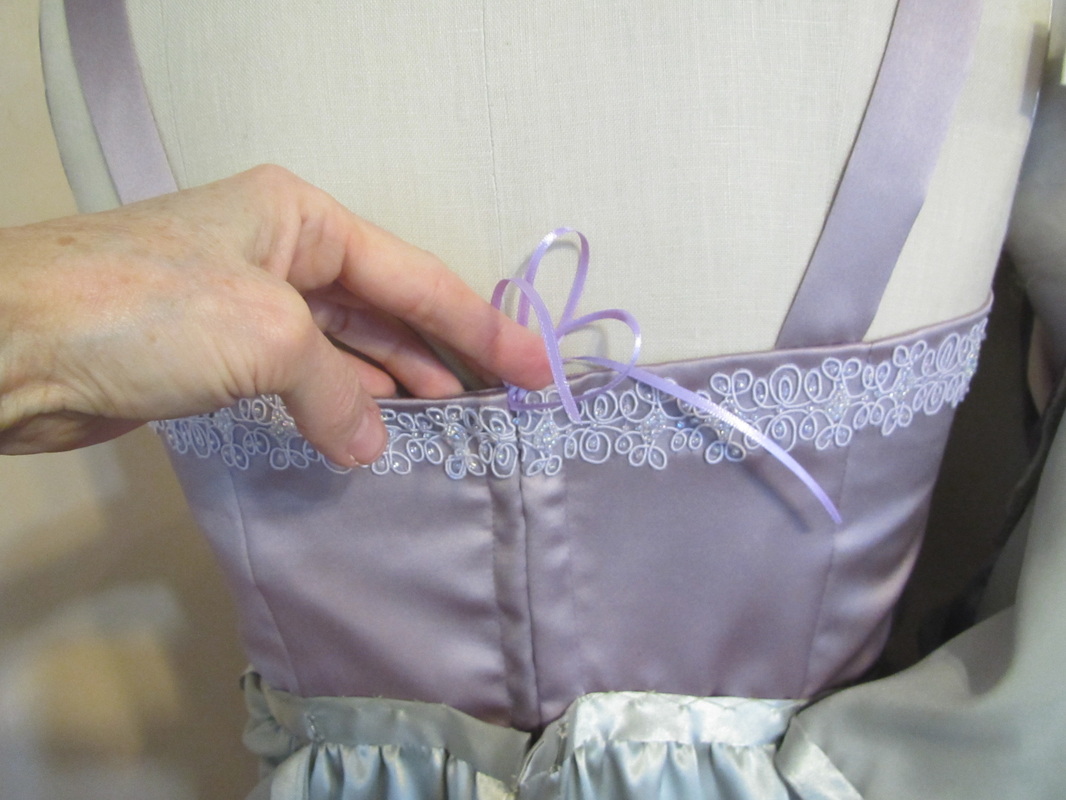
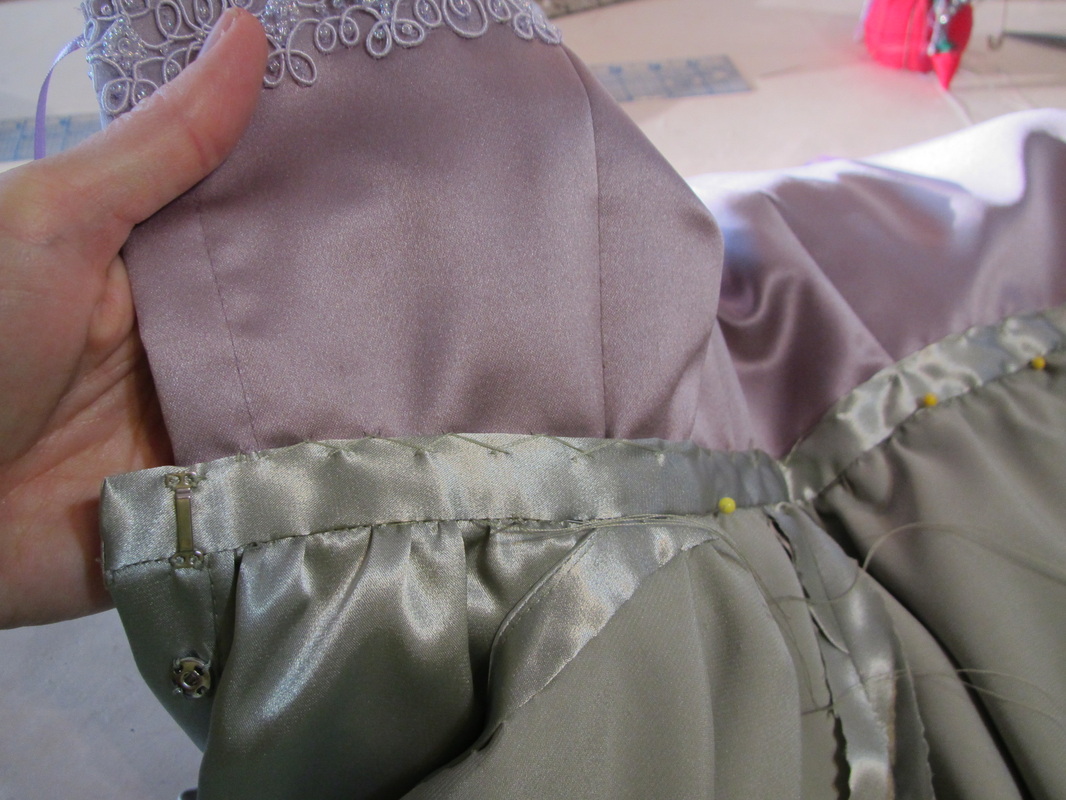
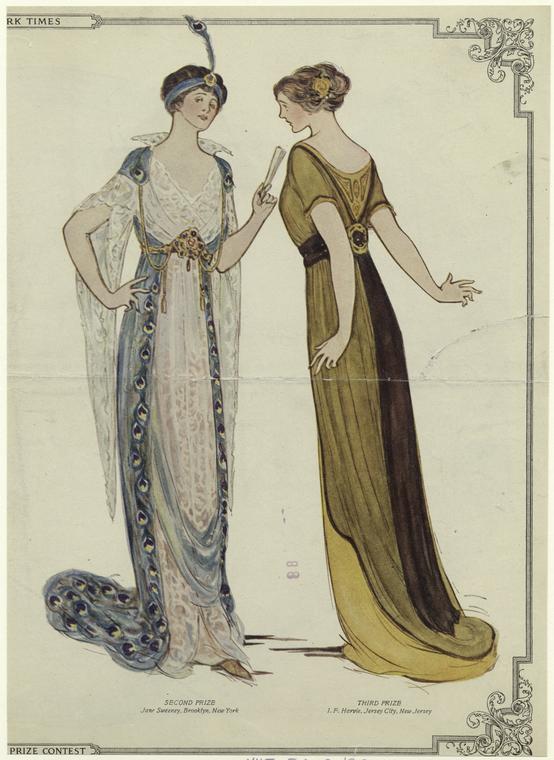
 RSS Feed
RSS Feed